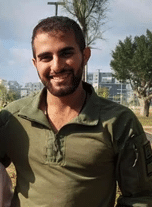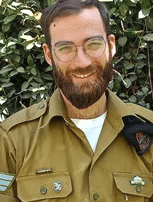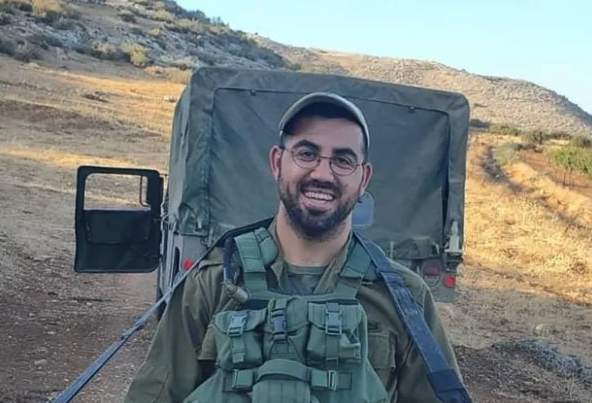
Overview
Netanyahu called on the Biden administration not to restrict sales or supplies of weapons and ammunition to Israel
Former war cabinet member Gadi Eisenkot affirms government war goals of destroying Hamas’ governmental, military, and organizational capabilities, warning that it will take many years and that the IDF must not be restricted from Gaza and cannot allow the establishment of an Arab-Palestinian state
The IDF struck a Hamas military site in Gaza City’s Shati camp targeting senior Hamas commander Raad Saad, head of Hamas operations and generally considered the organization’s number 4 in the Gaza chain of command. It is unclear if he was eliminated.
Hamas representative in Lebanon, Ahmed Abdul Hadi, said they would repeat the October 7th massacre if needed, arguing that the massacre was strategically necessary, and they could not allow normalization between Israel and regional states led by the US
IDF assessment indicates significant damage to Gaza, but there remains more work to do
Humanitarian aid convoys are routinely being raided by Hamas and Gaza civilians
Remarkable IDF successes in Philadelphi Corridor operations
Amos Hochstein, arrived in Israel and met with Netanyahu and Gallant to try to reach an agreement on the northern front and the return of residents to their homes.
Nasrallah delivered a speech threatening Israel, stating they would strike populated centers, paralyze the economy, attack maritime assets like gas rigs, target ships, and impose a naval blockade on the country, even threatening Cyprus for its cooperation with Israel.
International
G7 Leaders’ Communiqué included a statement of support for an immediate ceasefire, the release of all hostages, the Two-State Solution, and called for a significant and sustained increase in humanitarian aid.
Armenia has officially recognized the “State of Palestine”, citing the urgent humanitarian crisis in Gaza and the need for a peaceful resolution to the ongoing conflict.
A French court overturned a decision banning Israelis from attending the “Eurostory” weapons exhibition held in the country.
Irish Prime Minister Simon Harris stated he is working with several of his European colleagues to increase support for Palestine within the European Union.
The UN Human Rights Council claimed in a special report that Israel might have violated the basic principles of the laws of war in the Gaza Strip.
Canada added Iran’s Revolutionary Guards to its list of terrorist organizations. Following the Canadian government’s decision, the Canadian Foreign Minister warned citizens against traveling to and staying in Iran.

Gaza Strip
Diplomatic
US role in the war
Prime Minister Benjamin Netanyahu called on the Biden administration not to restrict sales or supplies of weapons and ammunition to Israel, comparing Israel’s current situation to that of Britain during World War II and stating that Israel’s fight against Iran in the Middle East is also America’s fight. This was done in a video in English on Netanyahu’s social media. The White House spokesperson said that apart from one delay in supply, there have been no other delays despite reports that the US is withholding a shipment of 1,800 Mark-84 2,000lb bombs, as well as 1,700 Mark-82 500lb bombs . It is also possible Netanyahu was trying to preemptively prevent delays that are being discussed behind the scenes. The administration reportedly canceled a strategic meeting between the countries about Iran due to Netanyahu’ statement.
Biden pressed members of his Democratic Party to vote in favor of a weapons deal with Israel. According to the deal, Israel will purchase 50 F-15 aircraft worth a total of $18 billion, strengthening the Air Force’s capabilities in the multi-front campaign against Iran’s proxies.
Netanyahu is considering transferring the task of the distribution of food to the Gaza civilians to the IDF. Currently, the military opposes this due to the risk to the soldiers who would enter or approach populated areas while terrorists hide among the civilians.

Gadi Eisenkot Interview
In a newspaper interview, former war cabinet member Gadi Eisenkot who left the government said, “The mission is not to topple Hamas but to destroy Hamas’ governmental, military, and organizational capabilities.” Eisenkot cautioned that this fight would continue for many years and that the return of hostages would take many months, and under no circumstances should there be an agreement to the non-demilitarization of the strip or the establishment of an Arab-Palestinian state, which would be a clear reward for terrorism. This assessment demonstrates the broad consensus across the political spectrum and the military brass that for the foreseeable future, Israel will need to control Gaza militarily to prevent a Hamas insurgency.
Hamas Interview in Lebanon
In an interview with a Lebanese newspaper, Hamas representative in Lebanon, Ahmed Abdul Hadi, said they would repeat the October 7th massacre if needed, arguing that the massacre was strategically necessary, and they could not allow normalization between Israel and regional states led by the US. He claimed this would normalize the occupation and push aside the Palestinian issue. He mentioned that the IDF had prepared plans for an attack on Gaza as Israel advanced its “Ben-Gurion Canal” (an Israeli conspiracy to to connect Eilat to Gaza City via a maritime canal), the construction of the Saudi city of NEOM, and the Indo-Arab corridor. Thus, the aim of the attack was to thwart the normalization process, which is a clear Iranian interest.
The Hamas International Diplomacy
Mohammad Al-Hafi, a member of Hamas’ Office for Arab and Islamic Relations, inaugurated the political office of the terrorist organization in Baghdad, Iraq, against the backdrop of reports that Qatar might order Hamas leaders to leave the country if they do not accept the ceasefire proposal.
Iranian Foreign Minister Ali Bagheri Kani met with Ismail Haniyeh, head of Hamas’ political bureau. The Iranian foreign minister reviewed the efforts made by the Islamic Republic of Iran to support the ‘Al-Aqsa Flood,’ particularly through regional and international institutions, including BRICS, Shanghai, and the Organization of Islamic Cooperation, as well as bilateral meetings with foreign ministers of the region and many international figures.

Operational
Current IDF Assessment of Hamas
According to senior IDF generals’ assessment of Hamas, is that it has ceased to exist as a military entity and operates only as a guerrilla organization. 12 out of its 24 battalion commanders have been eliminated, a significant portion of its command chain has been eradicated, and commander in different regions operate independently without communication with Yahya Sinwar or Mohammed Deif. The IDF dismantled 2 out of the 4 Rafah battalions and the other 2 are on the verge of being dismantled.
Only a few hundred long-range rockets remain in Gaza, most of which are in Rafah, Khan Younis, or the central camps. In northern Gaza, the remaining rockets can only target the border area or the lowlands.
Out of 40 estimated tunnels crossing under the Philadelphi Corridor, 25 have been discovered alongside 200 shafts. Of the 30,000-40,000 Hamas militants, 14,000 have been killed, 5,000 have defected from the organization (but might return to fight). About 10,000 Hamas operatives are still functioning, 2,000 of them in northern Gaza, enough to prevent any alternative administration from rising to power under Israeli auspices. The first phase of Gallant’s war plan has been fully completed (except for Deir al-Balah), but the road to completing the second phase of eliminating resistance pockets is still a ways off.
The IDF is operating in Rafah whilst announcing that it had begun to implement a daily “tactical pause of military activity” along a key road in the southern Gaza Strip to enable humanitarian aid to be delivered to Palestinians. The pause was to take place between 8 a.m. and 7 p.m. every day along a road that leads from the Kerem Shalom border crossing with Israel to the Salah a-Din Road on the eastern outskirts of Rafah, and then northward toward the Khan Younis area.
There is a lot of IDF activity in Zeitoun; the division has moved its operations northward to clear the neighborhood, possibly even destroying parts of it to prevent the constant mortar and rocket fire towards the route.
In Khan Younis, the Air Force destroyed a ready-to-launch rocket launcher belonging to Islamic Jihad that was set up in a populated area. Additionally, an airstrike eliminated a terrorist responsible for operating drones in Hamas’ aerial unit. As a reminder, two days ago, Hamas launched a UAV in an attempt to strike Kibbutz Holit at the southern end of the border area.
Looting of Humanitarian Aid by Hamas
Aid trucks transported food to the European Hospital and from there to UN warehouses in the center of Gaza for distribution. Gangs of civilians (not just Hamas) are raiding trucks to loot food; they even attacked UN warehouses and threatened foreign volunteers to hand over the contents. The goal of these raids is not just the food itself but what has become the “gold of the strip,” which is cigarettes. A pack of cigarettes sells for $25, and smoking has become an activity for the rich. After the Rafah crossing was closed and the restrictions placed on cigarette smuggling through the Kerem Shalom crossing, those who possess cigarettes can barter them at a high value for food and other goods. The gangs raid trucks, open food boxes, and even empty sacks of flour in hopes of finding them. This is one of the reasons why the U.S. wants Israel to provide security in food distribution as long as there is no alternative to providing reliable security. Israel cannot establish an alternative administration that could potentially provide such security until Hamas is completely eradicated.

Philadelphi Corridor and the Rafah Brigade
Nahal Brigade fighters are going house to house searching for weapons and tunnel shafts leading to the tunnel network under the Philadelphi Corridor. In civilian homes, troops are finding weapons including Kalashnikovs (AK 47), anti-tank missiles, grenades, magazines, explosives, and more. The terrorists are using tunnel shafts in residential homes including under children’s beds, and holes in walls that allow the terrorists to quickly move in the densely populated neighborhoods. Most of the battles are currently taking place in Tel Sultan, and other areas in Rafah.
Almost all of the civilians have left Rafah and moved to the humanitarian zone in El Mawasi allowing the IDF to operate more freely. According to estimates the IDF eliminated 550 terrorists out of the estimated 8000-10,000 terrorists who have been harboring in the Rafah area. Most of the terrorists have fled with the civilians to the humanitarian zones and the Khan Younis area. The remaining terrorists are hiding in buildings or underground, mainly using explosives. They place explosives wherever fighters approach, set up booby-traps in houses, and detonate them remotely, making the fighting extremely dangerous.
Over 1 million people left Rafah in the 12 days since the start of the operation. This was not only more quickly than the initial US assessment that the evacuation of civilians would take at least 4 months, but also quicker than the IDF’s own estimate of 4 weeks. This shows demonstrates the wide gaps between assessments from the reality on the ground. The IDF chose to advance slowly to allow more civilians to leave Rafah.
the IDF’s swift success in operationally controlling the Philadelphi corridor is quite remarkable as un armored military vehicles can operate freely with only some areas requiring armored vehicles. This was not even the case when Israel held the corridor before the disengagement in 2005 where the corridor was infested with terrorists. The IDF has started to allow Israeli journalists into the corridor a testament to the success in clearing the last Hamas stronghold there.
Similar to the Nezarim Corridor, there is also an effort to clear and demolish buildings just several hundred meters from the border with Egypt, along with the construction of dirt embankments for protection. The Rafah crossing has become an IDF staging area. Along the coastline, the IDF can now prevent smuggling by sea.
The defeat of the Rafah Brigade is nearing, and the elimination of pockets of resistance in northern Gaza is also progressing effectively. 120 hostages (of which, the WSJ estimates, about 50 are still alive) are mostly held, if not all, in the humanitarian zones where thousands of terrorists have been seeking shelter and where significant support for Hamas still exists.
In Rafah, there remains an “underground city” with at least 40 tunnels crossing into the Sinai Peninsula. To completely dismantle Hamas battalions, it will be necessary to destroy the tunnels, weapon warehouses, workshops, headquarters, and eliminate the command chain of each battalion in the neighborhood where it is based. This process is currently underway in the Rafah area and will likely continue for a minimum of another two weeks and may continue on for a few more months as there is no clear indication how extensive the terrorist infrastructure underground is and how long it would take to completely secure the underground components of the Philadelphi Corridor.
Other
The US pier resumed operations on Thursday, delivering 656 tons of humanitarian aid to the strip in one day. This took place after it was repaired for the second time.
The IDF struck a Hamas military site in Gaza City’s Shati camp targeting senior Hamas commander Raad Saad, head of Hamas operations and generally considered the organization’s number 4 in the Gaza chain of command. It is unclear if he was eliminated. He would be the most senior Hamas commander to have been eliminated since the elimination of Marwan Issa in March.

Lebanon
Diplomatic
The United States’ Special Presidential Coordinator for Global Infrastructure and Energy Security, Amos Hochstein, arrived in Israel and met with Prime Minister Netanyahu and Defense Minister Yoav Gallant to try to reach an agreement on the northern front and the return of residents to their homes. Hochstein demanded that Israel present a plan for the day after in the Gaza Strip, stating that without such a plan, it would be difficult to reach an agreement on the northern front. On Tuesday, Hochstein arrived in Beirut to mediate the agreement from the Lebanese side. In addition to Israel’s need to strike Hezbollah with a preemptive blow and weaken it for the future, a significant challenge in reaching an agreement is Hezbollah’s insistence on linking their attacks on Israel to the Gaza Strip, that clarifies that Hezbollah insists on continuing to attack Israel in the north as long as Israel continues to operate to dismantle Hamas in Gaza which is likely to continue for many more months..
In his meeting in Washington with Minister of Strategic Affairs Ron Dermer and National Security Council Advisor Tzachi Hanegbi, U.S. Secretary of State Antony Blinken “emphasized the importance of avoiding further escalation in Lebanon and achieving a diplomatic solution,” according to the U.S. State Department. Blinken also stressed the need to take additional steps to bring humanitarian aid into Gaza and to plan for the day after the war in terms of governance, security, and reconstruction of Gaza.
According to CNN American officials promised Israel would get the full military assistance it needs for war against Hezbollah if it erupts, while noting no US troops would be deployed on the ground.

Nasrallah Speech
Hezbollah Secretary General Hassan Nasrallah delivered a speech threatening Israel, stating they would strike populated centers, paralyze the economy, attack maritime assets like gas rigs, target ships, and impose a naval blockade on the country, even threatening Cyprus for its cooperation with Israel.
The Cypriot government, an EU member, fearing a possible engagement with Hezbollah quickly released a statement attesting its neutrality in the conflict.
Hezbollah has released provocative videos taken from drones and UAVs showing sensitive sites in Israel including population centers like HaKrayot (an area near Haifa), the Dimona nuclear site, IDF sites such as Iron Dome batteries and strategic infrastructure like the Port of Haifa.
Foreign Minister Israel Katz threatened, “We are approaching the moment of decision to change the rules of the game with Hezbollah and Lebanon. In a total war, Hezbollah will be destroyed, and Lebanon will be severely hit.”
After approving the operational plans in the Northern Command, Defense Minister Gallant and Chief of Staff Herzi Halevi held a situation assessment. Gallant stated that the situation in the north would change through either diplomatic pressure or extensive military action.
Operational
The IDF eliminated Ayman Ghatma in a targeted strike 40 km from the Israel-Lebanon border. He was responsible for supplying weapons to Hamas in Lebanon as well as to the al-Jama’a al-Islamiyya terror group.
Hezbollah bombarded northern Israel with some 45 rockets on Thursday after an Israeli drone strike killed one of the terror group’s field commanders. The IDF eliminated Abbas Ibrahim Hamza Hamada who was the operations officer of a Hezbollah regional unit based in the Jouaiyya area of southern Lebanon, a town close to Deir Kifa.

Judea and Samaria
Since the start of the war 4,150 wanted Palestinians across the Judea and Samaria have been arrested, including more than 1,750 affiliated with Hamas.
The Al-Aqsa Martyrs’ Brigades – “Night Knights Group” from Nur Shams Camp (a newly formed terrorist group that joined with militants from Fatah’s terror brigades) released footage this afternoon of shooting training, an initial battalion meeting, and threats of attacks and killings of Jews.
A 67-year-old Israeli civilian was shot in his vehicle by unknown gunmen in Qalqilya on Saturday and later died of his wounds. A large military force entered the city after the incident.
On Thursday, a 78-year-old man, was robbed near the Eliyahu crossing close to Qalqilya. He was attacked by Palestinians and sustained severe injuries. Later he died from a heart attack and his injuries.

Iran
Iranian Foreign Minister Ali Bagheri Kani met in Doha with the Prime Minister of Qatar and Foreign Minister Sheikh Mohammed bin Abdulrahman bin Jassim Al Thani.
During their meeting, they described the bilateral relations between Iran and Qatar as “excellent.” Al Thani expressed hope that the two countries would further strengthen their cooperation. He also mentioned that the situation in Gaza is critical and called for continued consultations between Doha and Tehran to help ensure regional stability and security.
Under the title: “Death to America, Death to Israel: The Global Campaign of Innocence Against the Zionist Entity and America that Supports It,” Iran’s Supreme Leader, Ali Khamenei, addresses pilgrims to Hajj and followers around the world. On Khamenei’s website, there is a call to activists and followers to post the chants “Death to Israel” and “Death to America” on their social media accounts.






Comments